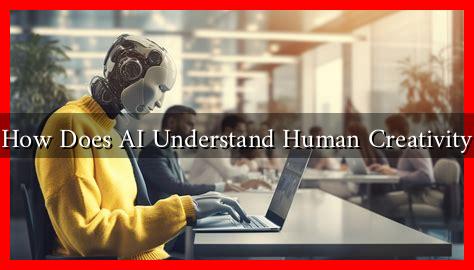-
Table of Contents
How Does AI Understand Human Creativity?
Artificial Intelligence (AI) has made significant strides in recent years, particularly in understanding and mimicking human creativity. This article explores how AI interprets creativity, the technologies involved, and the implications for various fields, including art, music, and literature.
The Nature of Human Creativity
Human creativity is a complex and multifaceted phenomenon. It involves the ability to generate new ideas, solve problems, and express oneself in unique ways. Creativity can manifest in various forms, including:
- Artistic expression (painting, sculpture, etc.)
- Musical composition
- Literary creation (poetry, novels, etc.)
- Innovative problem-solving in science and technology
Understanding human creativity requires an exploration of cognitive processes, emotional intelligence, and cultural influences. AI’s challenge lies in replicating these intricate aspects of human thought and expression.
How AI Analyzes Creativity
AI employs several techniques to analyze and understand human creativity. These include:
- Machine Learning: AI systems are trained on vast datasets that include creative works. By analyzing patterns, styles, and structures, AI can learn to generate new content that mimics human creativity.
- Natural Language Processing (NLP): In literature and poetry, NLP allows AI to understand context, tone, and emotional nuances, enabling it to create coherent and contextually relevant text.
- Generative Adversarial Networks (GANs): GANs consist of two neural networks that work against each other to create new content. One network generates content while the other evaluates it, leading to increasingly sophisticated outputs.
For example, OpenAI’s GPT-3, a state-of-the-art language model, can generate human-like text based on prompts, showcasing an understanding of narrative structure and thematic elements.
Case Studies in AI and Creativity
Several notable projects illustrate how AI can understand and contribute to creative fields:
- AI in Visual Arts: The AI program DeepArt uses neural networks to transform photographs into artworks in the style of famous painters. This technology analyzes the stylistic elements of existing artworks and applies them to new images, demonstrating an understanding of artistic techniques.
- Music Composition: AIVA (Artificial Intelligence Virtual Artist) is an AI composer that creates original music. Trained on a dataset of classical music, AIVA can compose pieces that evoke specific emotions, showcasing an understanding of musical theory and emotional expression.
- Literary Creation: The AI Dungeon platform allows users to create interactive stories with AI-generated narratives. By analyzing user inputs, the AI can generate plot twists and character developments, reflecting an understanding of storytelling dynamics.
The Implications of AI in Creative Fields
The integration of AI into creative processes raises several important questions and considerations:
- Collaboration vs. Competition: AI can serve as a collaborative tool for artists, musicians, and writers, enhancing their creative processes. However, there are concerns about AI-generated content overshadowing human creativity.
- Intellectual Property: As AI creates original works, questions arise regarding ownership and copyright. Who owns the rights to a painting created by an AI? This legal gray area needs to be addressed as AI continues to evolve.
- Ethical Considerations: The use of AI in creative fields prompts discussions about authenticity and the value of human creativity. Can a machine truly understand the emotional depth of a human-created work?
Conclusion
AI’s understanding of human creativity is a fascinating intersection of technology and art. Through advanced algorithms and machine learning, AI can analyze and replicate creative processes, leading to innovative applications in various fields. However, as we embrace these advancements, it is crucial to consider the implications for artists, intellectual property, and the essence of creativity itself. The future of AI in creativity holds immense potential, but it also challenges us to redefine what it means to be creative in an increasingly automated world.
For further reading on the intersection of AI and creativity, you can explore resources like MIT Technology Review.

